My Bread Journey
Published on Jul 14, 2025 (edits)
Jacques Lucke
In this post I want to share my journey from rarely baking at all to somewhat knowing what I’m doing when it comes to bread baking. I’ll share some of my successes, failures and other nice stuff that happened along the way. In the end I’ll also give some pointers to learning resources I recommend in case you want to bake bread too.
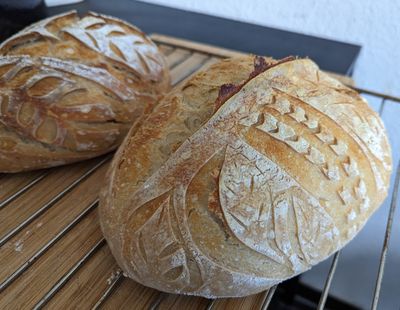
How it began
It all started on the 14th of February 2021. I never really considered baking bread or anything related before. On that day I was motivated to give it a try because a good friend of mine made bread rolls and those were nice. Trying it for the first time myself I was pleasantly surprised by how easy the whole process was to get something not-terrible. Obviously, they weren’t great, but hey, it’s recognizable.
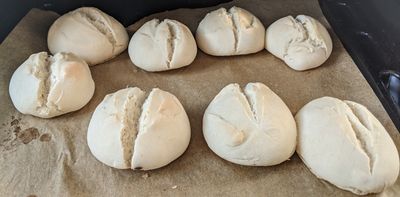
I’m not entirely sure what made me stick to trying to make bread over and over again in the beginning even though there were many failures. I know that later I was just fascinated by how such simple ingredients can result in such an interesting outcome: flour, salt and water. Even though the ingredients are simple, making great bread is a fairly involved balancing act and typically requires getting a good feel for how the dough should behave.
My Sourdough Starter
The first few times I’ve used store-bought yeast. However, I quickly learned that there is a thing called “sourdough”. Luckily, my first attempt at creating my own starter from rye flour and water succeeded in a week, and it has been used in every bread I made ever since.
It’s astounding how resistant this mixture of flour and water can become after a while. It survives easily multiple days at room temperature or multiple weeks in a fridge. Not that I recommend neglecting it for that long, but it’s good to know that it can survive.
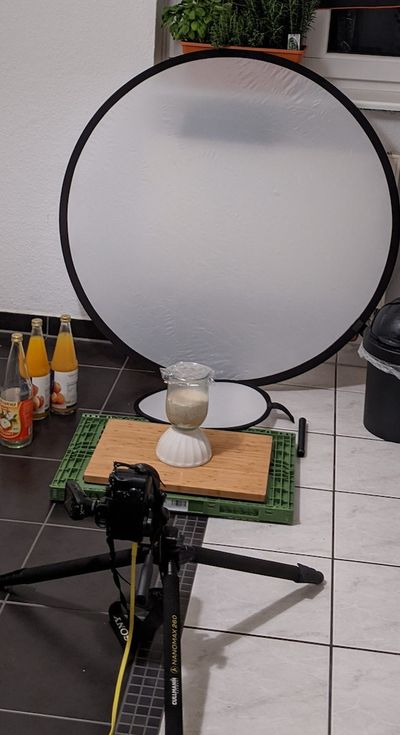
Many bakers give their sourdough starter a name. I haven’t. Not sure why, it’s just not really a thing I do.
Failures
As many that start with making sourdough bread, my baking attempts ended in many accidental flat breads or other sticky substances.
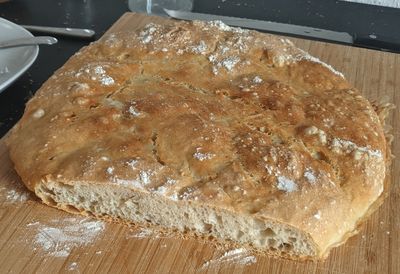
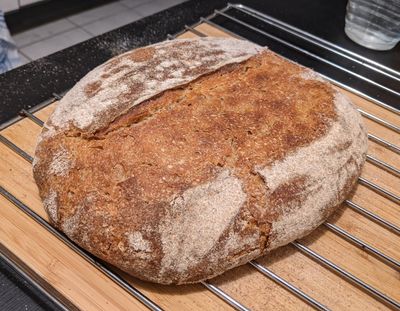
I also had some breads that were technically a success, but that were so spicky that they were hard to eat :D
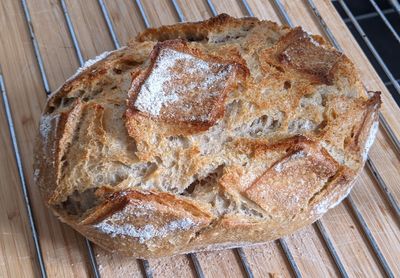
Successes
After creating tens of breads, the process finally became more routine and the outcome was good more consistently. Specifically, it became good enough that I could give it away without feeling bad about it.
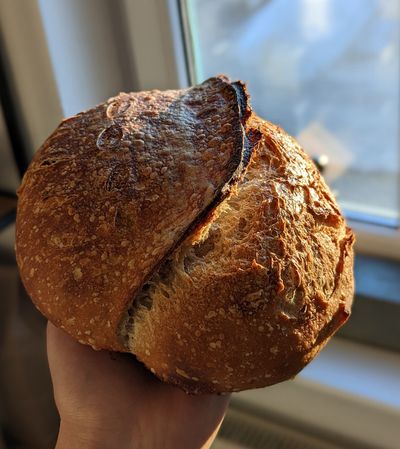
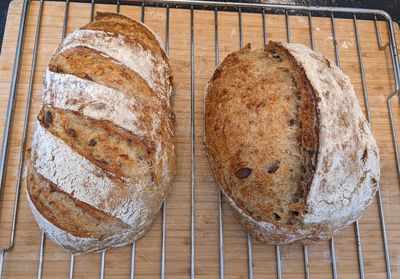
Giving away bread also meant that I could progress more quickly because I didn’t have to eat everything myself. Nowadays, I probably give more than 75% of breads to family and friends for various occasions.
Bread Scoring Art
Right before the bread is put into the often it has to be scored (cut into) so that it can properly open up during baking. A single cut is generally enough. However, one can also attempt to make somewhat artistic patterns in the bread. The main downside is that people hesitate more to cut into the bread because they don’t want to destroy it.
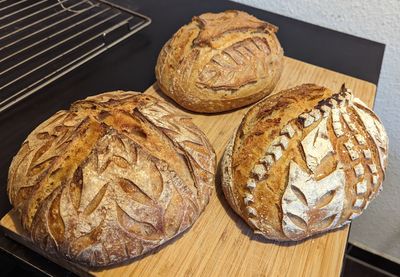
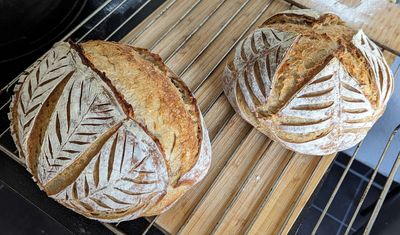
A tricky aspect of cutting into the bread like this is that one has to be fairly quick because otherwise the bread will just become flat if it’s not strong enough.
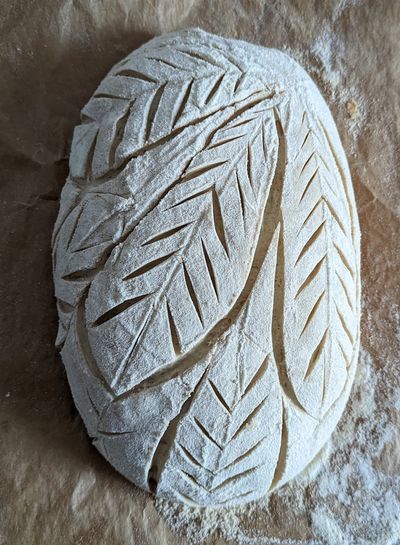
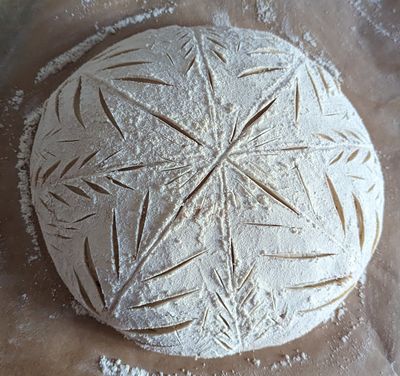
Bread Rolls
Only way too late I learned how easy it is to turn a bread dough into bread rolls which are sometimes more convenient. What I especially like is that I can decide whether I want to have bread or bread rolls right before moving the dough to the oven, so very late in the process. This helps when you’re not quite sure what people prefer until then.
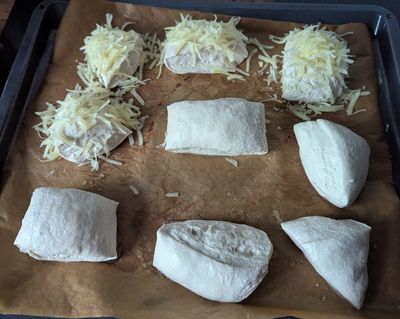

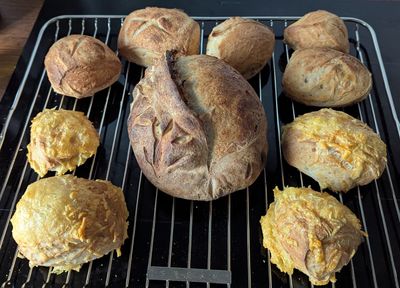
When baking for breakfast with others, it’s also easy to customize what is put into the bread rolls like seeds or cheese.
Toast
One or two times I also attempted to make toast which is sometimes easier to work with when making sandwiches. While that worked overall, it wasn’t quite as good as I had hoped yet. I probably need to add some more fat or use a different flour mix so to make it softer. Overall, I didn’t pursue this further though because normal bread used fewer ingredients, usually tasted better and is likely more healthy.
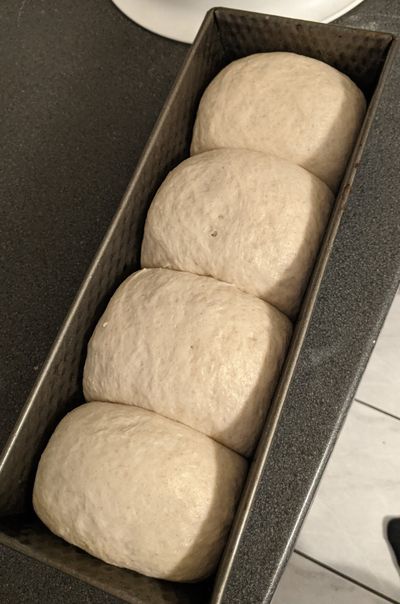
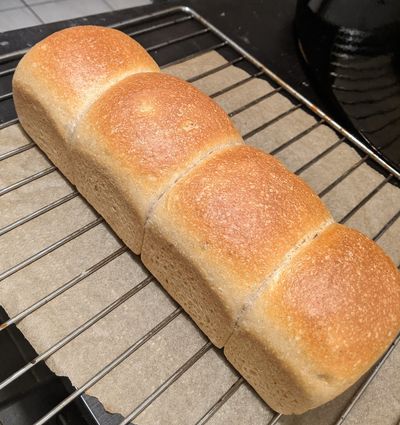
Lye Bread
Another interesting tangent I want on was making lye bread. This involves putting the dough into a strongly corrosive lye for a few seconds before putting it into the oven. One needs to be careful when doing that, so I used protective gloves and safety goggles.
By putting the dough into the lye, the dough surface is changed in a way that makes it brown very quickly in the oven and changes the taste a bit.
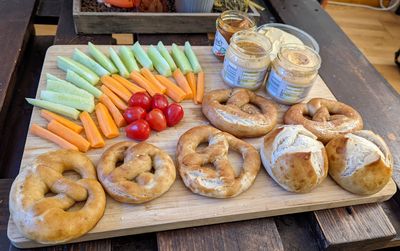

Baguette
While probably not “proper” baguette, I attempted a few times to make bread in the form of baguettes and that generally worked out quite well. I used the same dough as for normal bread or bread rolls. Just the shaping process is a bit different.
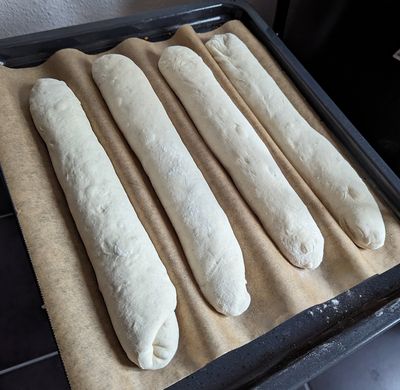
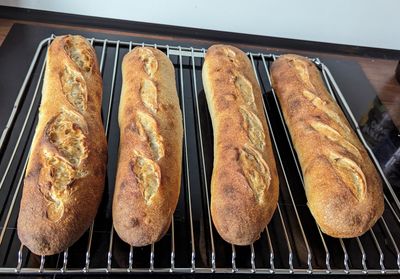
More Patterns!
For special occasions I made breads with other kinds of patterns. Once I tried to put a smiley into it and other time I used the laser cutter of a nearby Makerspace to engrave text. The latter worked surprisingly well. It was just unexpected that the text became lighter and not darker.
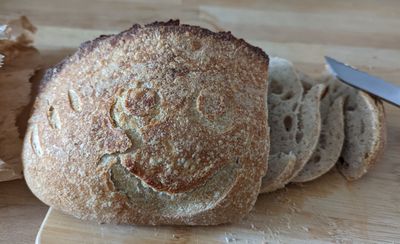
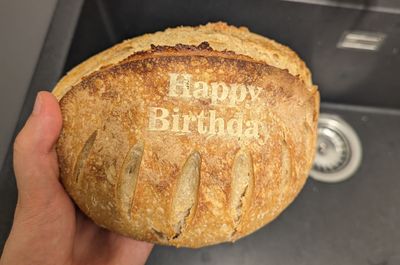
Sharing Bread
I found that giving self-baked bread to someone is a great way to make their day better. As mentioned before, nowadays, I give most breads away or bring them to meetups with friends and family for everyone to enjoy.
Twice I went a step further and attempted to share bread with my neighbors. For that I baked two breads early on a Sunday morning and put them on a rack in the staircase in the apartment building I live in. Then I went back to sleep. Checking a few hours later, the breads were magically turned into sweets which was very nice to see. I don’t know who took the bread exactly, but I hope they liked it.
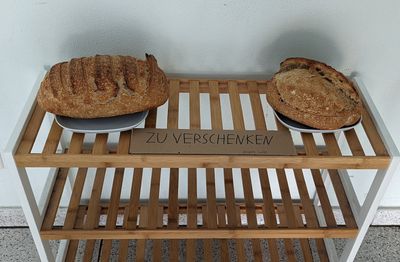
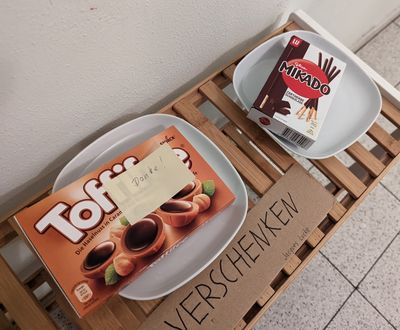
Learning Resources
I learned most things about bread baking from videos. While I learned from many different creators, the channel that stuck out to me was The Bread Code. The engineering based approach to baking bread was just very useful to me. Later I also helped proofread his open source book “The Sourdough Framework” which I can really recommend interested in making sourdough bread. It’s available for free online, but you can buy a hardcover version.
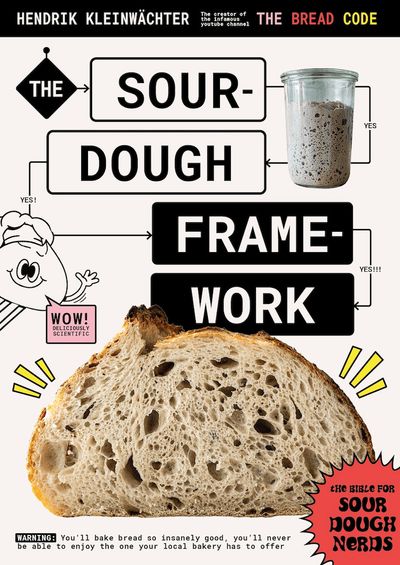
Besides that I also got a book named “Bread Science” which was an interesting read too.
Conclusion
I’m a few years into this hobby now, and I’m glad I stuck to it. It was great to be able to do something with my hands too because before that most I did was digital. The number of breads a bake per month as declined in the last few months, but my starter is still alive and well and will hopefully continue to be for a long time!